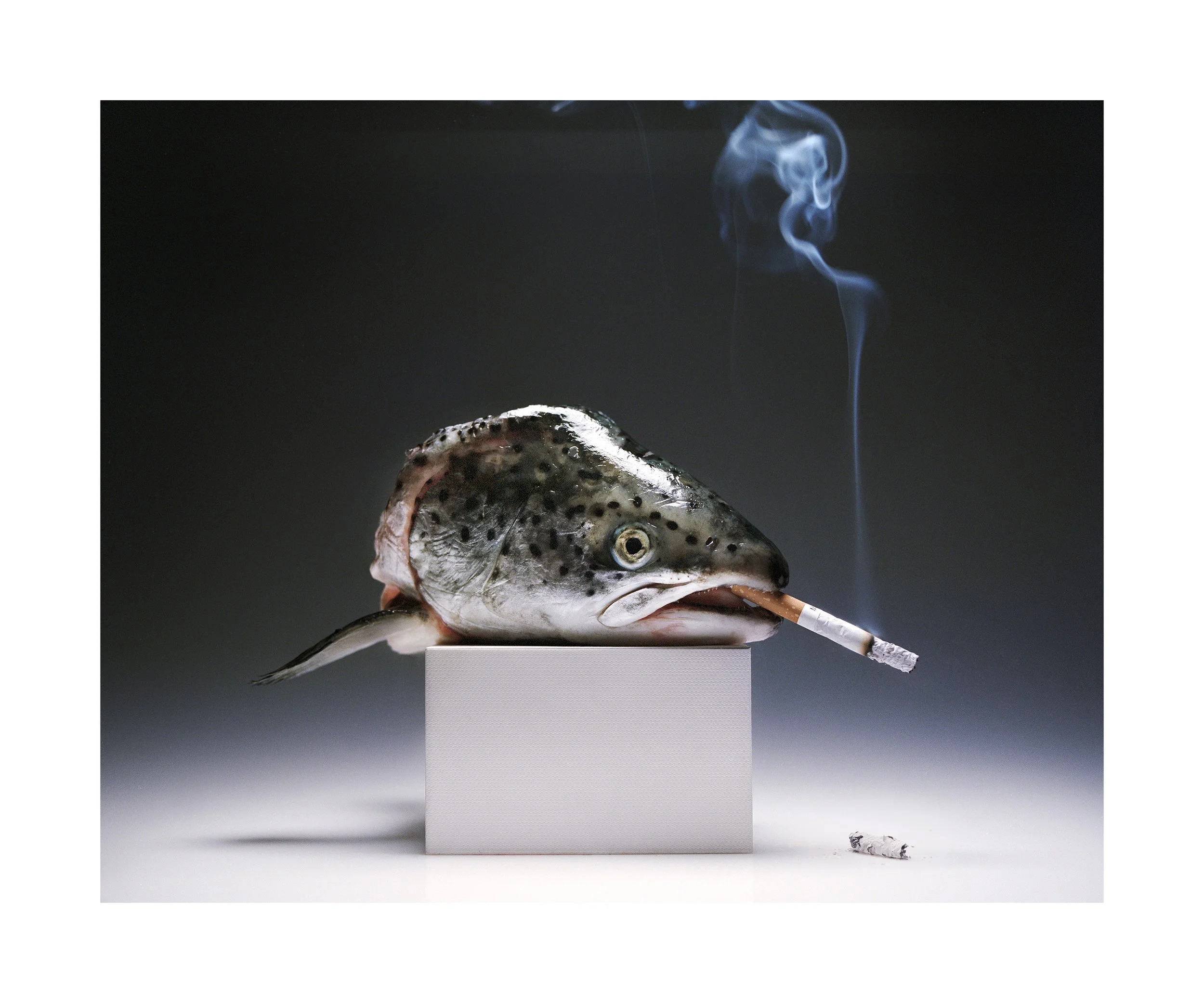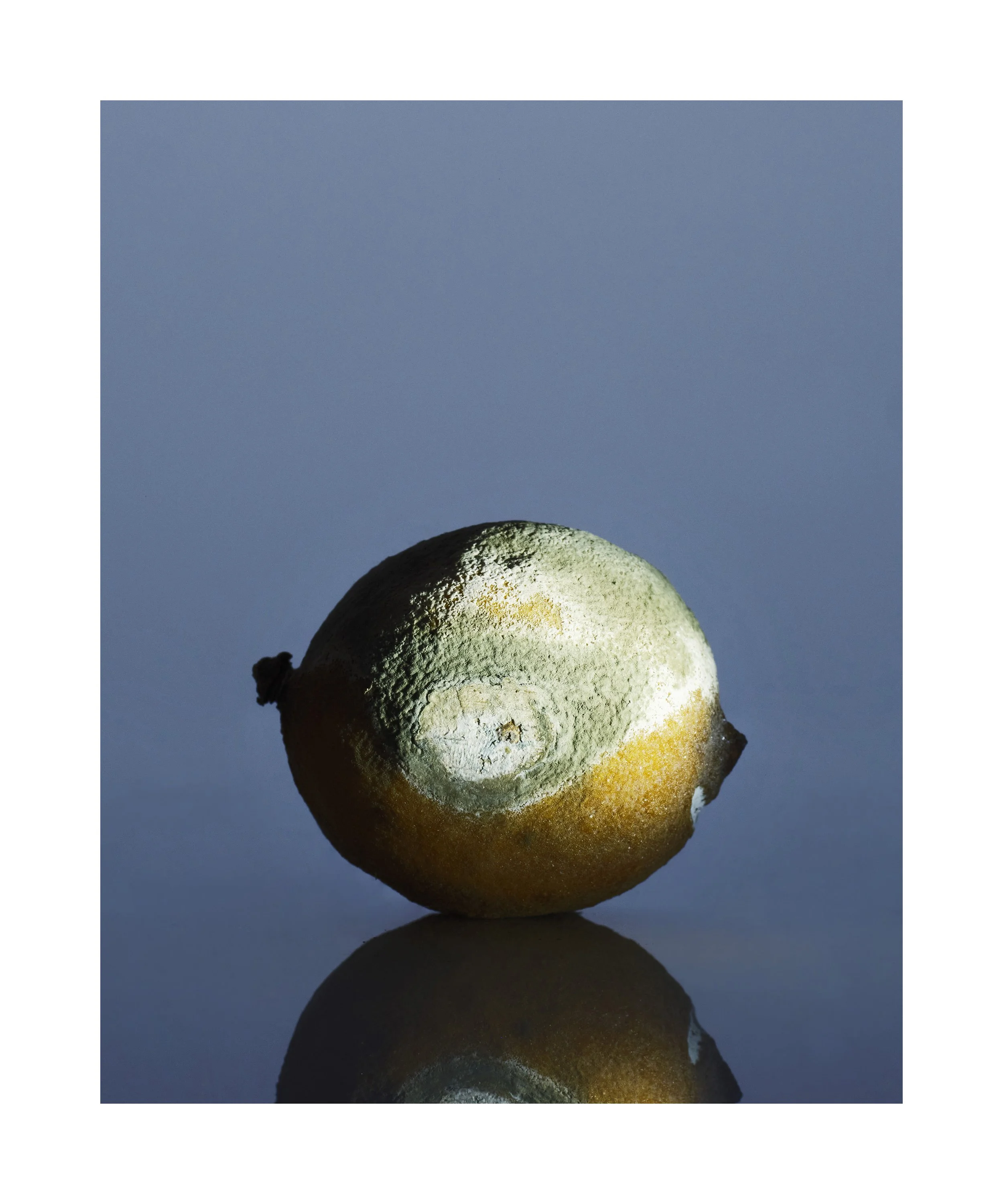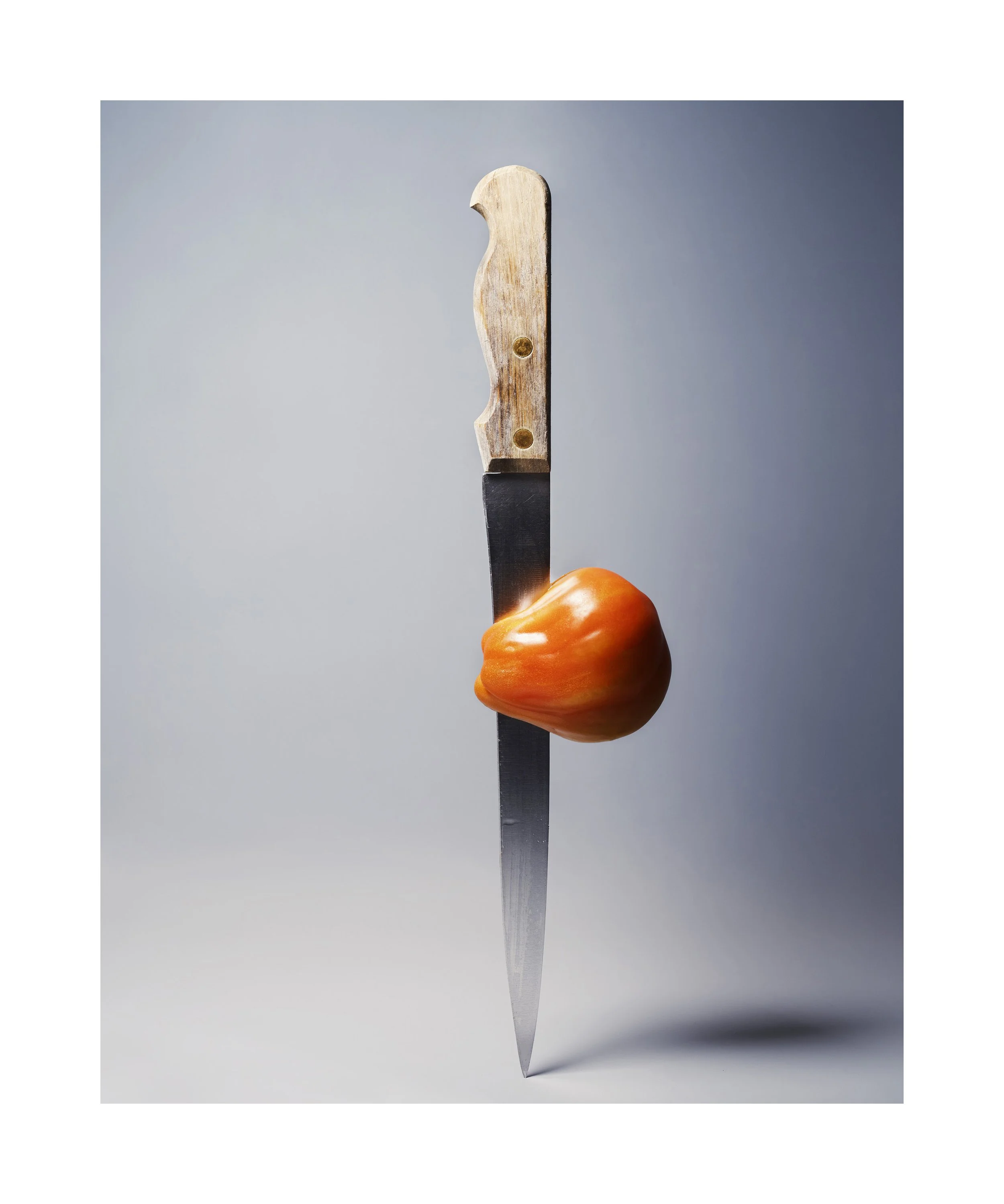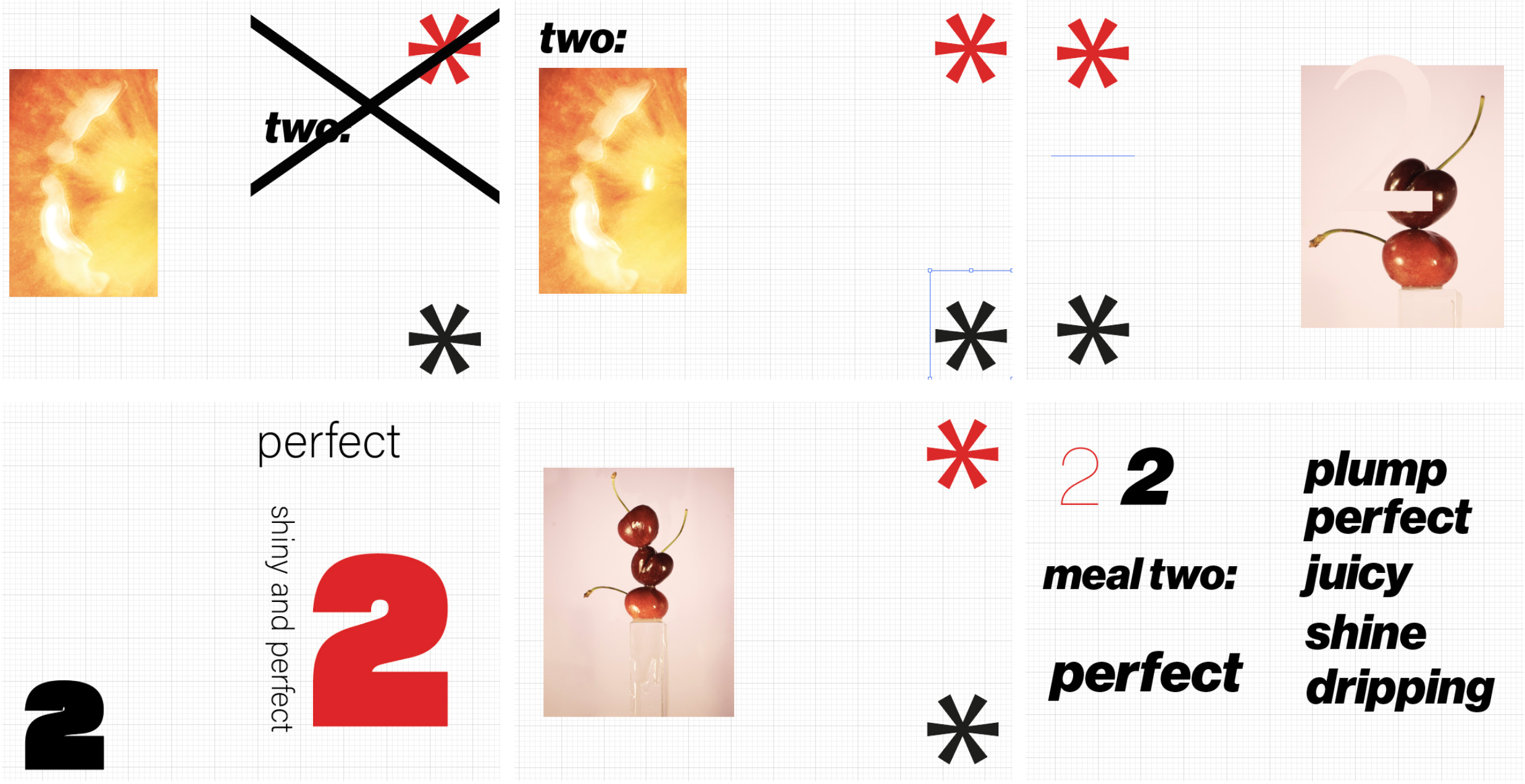Three
“When we use food to think through the world, we can never do it entirely as outsiders looking in, and this is what makes food a close and affective way to work with social and ecological ideas. As Elspeth Probyn writes ‘The question of how to live today can best be seen at gut level’”.
(Rosenthal Sloan, 2019, p15) (Probyn, 2000, p7)
I started this journey with a guttural assumption there is something wrong with the British attitude towards food. In my research I had observed that the consumer is visually disconnected from where their food comes from and how it is produced, and I had developed a belief that everyone should be able to grow at least some of their own food, and should actively involved in what they choose to eat and consume. I also believe strongly that growing ones food is better for the individual and for the environment. I had a suspicion that the British (perhaps global, but the focus of this work is the UK for reasons which will be explained) food system was broken, and even those trying to fix it such as regenerative farms had non-philanthropic motives.
I had started probing these ideas several years ago in my still life photography practice, initiating a series of photographs motivated by the excessive plastic packaging and artificial processes I had noticed when examining my own food shopping. I sought to parody this by using man made materials and processes as props and set design in the images, for example respraying bananas to until they became the correct yellow, and I titled the series “Kitchen”.
(Fig. 1 - Kitchen)
Although this work was enjoyable to make, it felt limited in scope and outcome, and not hugely innovative. However, this early series exposed “food” as an area of work that could be infinitely deep and was incredibly relevant on a personal level and on a broader socio-environmental level.
Fig. 1
Fig. 2
After the pandemic I moved to rural Suffolk with my wife and two children, and we begangrowing our own food - tending a vegetable garden and keeping chickens. I documented this through a photographic journal, largely for my children to have something to look back on. This body of work is brought together under the title “Garden” and serves as action research informing my practice.
(Fig. 2 - Garden)
A core supporting text during this time was John Seymour’s “The new complete book ofself-sufficiency” from which the reader can learn the correct way to plant potatoes, how to slaughter a pig and how to produce hot water using a hose-pipe and glass bottles. It felt like finding a tome of long forgotten ancient knowledge.
(Fig. 3 - John Seymour’s “The new complete book of self-sufficiency, 1976)
As a family we started to become self-sufficient and the way I felt about the world aroundme started changing - particularly in how I thought about the nature of consumption,capitalism and structures of authority. It could be argued that as infants food is our firstexperience of consumption, and so our relationship with food as we develop is critical inhow we interact with the world around us - consumption is what defines our reality and how we make our voices heard - in modern western society we “vote with our wallets” (James M Buchanan, 1954, p334).
Fig. 3
Yes, but... (Lasswell's cow).
“But living here has altered our sense of values. We find that we no longer place the same importance on artefacts and gadgets as other people do...I wonder where all this progress is leading. Is it really leading to a better or richer or a simpler life for people? ...I wonder about the nature of progress.”
(John Seymour, 1961, p17)
Fig. 4 and Fig. 5
I wanted to make a body of work that reflected the importance of John Seymour’s book,and my initial intention for the MA project was to reinterpret and redesign the original text with a fresh modern aesthetic. I started explore this concept by reworking a spread from the book on how to make bread. This was a suitable place to start because bread is such a universal staple around the world and is basic to make. I found the original text to be very laborious, and visual the layout was cluttered, so I went through a process of redacted layers of instruction and experimented with dissemination by creating a flip- book that would feature only the most basic visual and lingual information.
The more time I spent reading John Seymour’s book, the less I liked him and the moreproblematic I find the tone of the text. In particular the representation of male and female roles in the self-sufficient home is outdated and cumbersome.
(Fig. 4 & 5)
“A Salesman, who retired early, and his wife bought a very remote 25 acre holding. They have done up the house, and fenced and improved the land. They keep a herd of goats and some poultry from which they get all their milk and meat. They run a fine garden, and the man works part time as an engineer for a local firm. The wife does most the manual work on the holding and loves it.”
(John Seymour, 1961, p390)
Fig. 6
As a creative practitioner I am interested in visual communication, and feel largely disappointed at the quality of communication in everyday life - from educational facilities to advertising, to inter-personal relationships.
I spent time researching into communication models and was surprised at how these seem to be largely overlooked. Applying the Lasswell model (fig. 6) to Seymour’s book highlighted that there is no opportunity for feedback in his approach - he does not listen or engage, he instructs from a position of comfort and privilege.
The system that stood out to me is Schramm’s model of communication - essentially a Venn diagram which highlights figure A and figure B can really only communicate effectively where they have an area of shared experience - this shared experience could be described as common ground.
(Fig. 7)
Fig. 7
I contextualised this model against my early work and John Seymour’s book - it started to click as a methodology and I started questioning Seymour’s position of authority.
“Authority, unless justified, is inherently illegitimate and that the burden of proof is on those in authority. If this burden can’t be met, the authority in question should be dismantled.” (Noam Chomsky, 2014)
Removing this paternal narrative from the work would allow a two-way channel for the reader author to explore food sufficiency as equals, effectively ploughing common ground. With this in mind I restructured the project to present my own experience and research into the relationship with food, both in terms of production and consumption. Instead of basing the book around a redesign of Seymour’s text I decided to use the opportunity to present my own research - exploring the use of communication methods and materials to affect consumer change, or at least how to affect said change - without taking an authoritative tone.
During the life span of this project the British food system has been in a state of shock due to a combination of heat waves in southern Europe and a damaged supply chain there has a been shortage particularly of fresh fruit and vegetables. This issue combined with the cost of living crisis largely caused by the Russian invasion of Ukraine, has led to the British food chain finding itself momentarily in the public Zeitgeist.
The phrase “a society is only ever nine meals from anarchy” was used at one point in a news story and it stuck with me. In the context it means after three days of starving asociety will break down - but I consider it differently: anarchism as a political philosophyrepresents to me freedom and personal responsibility, what if the UK could achieve this level of freedom in what and how it eats?
I think again about my original research question “Is there a visual disconnect in the UK between what we eat and how it is produced, and how can a creative practice address this and activate agency in the consumer?”
The idea of 9 “meals” acting as a recipe book to guide the reader from the supermarket to the allotment gave me a framework - using these visual meals as pathway towards deeper understanding and greater consumer agency. I find the concept of re-imagining visual narratives as meals a fascinating one - thinking back to my undergraduate studies in photography I referred to the traditional of the photo-essay.
Considering a traditional book format as an appropriate initial outcome, each visual “meal” would constitute a chapter, starting at “ONE:” highlighting the visual disconnect identified in the supermarket, the cathedral of consumption, and ending at “NINE” in an anarchistic kitchen garden state. I worked towards this outcome for the master project, seeing the book only as a pre-production dummy from which further refinement and development would expand.
In taking this nine chapter structure I started to collate existing photographic work from both my “Kitchen” and “Garden” projects, and then work out where the gaps would allow to make new images. “Kitchen” served as a opening chapter as it was the initial spark of the project - starting with supermarket food.
The visual narrative moves through an expanding experience of food, from baking (section 2) to livestock (sections 3 & 4), into fruit and the language of luxury advertising (section 5) and into the kitchen (section 6) before returning to the vegetable garden (section 7 & 8) before finishing back the studio (section 9) with a series that mirrors the initial “Kitchen” work using the yield from my own garden that I have documented throughout the book.
Fig. 8
Recipes, SNU Final Outcome. 2022. Screen-print on giclee print, newsprint stock.
Egg egg egg. 2022. Screen-print on photograph.
Initial layout tests using new photographic material and typography. I’m particularly interested in how I can use words to enhance and manipulate the reading of the image - for example “shiny” or “perfect” draw attention to the quality of the produce in the image. I’m also exploring the use of numbers as section / chapter headings.
A development from an early shoot, this series shows an alternative way of exploring the idea of food crossing the line from appetising to unappealing.
Typographic / Photographic Experiment. 2021.
Work in progress typographic experiments - these often happen organically on the printing bed after setting up the elements (stencils with type face, limited colour palette etc.).



































